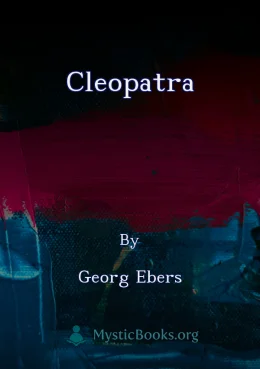Georg Ebers
Georg Moritz Ebers was a German Egyptologist and novelist. He is best known for his purchase of the Ebers Papyrus, one of the oldest Egyptian medical documents in the world.
Georg Ebers was born in Berlin and was the youngest of the five children of an affluent family of bankers and porcelain manufacturers. The Ebers children were raised by their mother on her own, after their father committed suicide shortly after Ebers was born. His mother ran a salon popular among members of the intelligentsia, which included Georg Wilhelm Friedrich Hegel, the Grimm Brothers, and Alexander von Humboldt.
At Göttingen, Ebers studied jurisprudence, and at Berlin Oriental languages and archaeology. Having made a special study of Egyptology, he became in 1865 Dozent in Egyptian language and antiquities at Jena, becoming professor in 1868. In 1870 he was appointed professor in these subjects at Leipzig. He had made two scientific journeys to Egypt, and his first work of importance, Ägypten und die Bücher Moses, appeared in 1867–1868. In 1874 he edited the celebrated medical papyrus (Papyrus Ebers) which he had discovered in Thebes (translation by H. Joachim, 1890).
Ebers early conceived the idea of popularising Egyptian lore by means of historical romances. Eine ägyptische Königstochter (An Egyptian Princess) was published in 1864 and obtained great success. His subsequent works of the same kind — Uarda (1877), Homo sum (1878), Die Schwestern (1880), Der Kaiser (1881), of which the scene is laid in Egypt at the time of Hadrian, Serapis (1885), Die Nilbraut (1887), and Kleopatra (1894) — were also well received, and did much to make the public familiar with the discoveries of Egyptologists. Ebers also turned his attention to other fields of historical fiction — especially the 16th century (Die Frau Bürgermeisterin, 1882; Die Gred, 1887) — without, however, attaining the success of his Egyptian novels.
Ebers discovered the Ebers Papyrus (ca. 1550 BCE) at Luxor (Thebes) in the winter of 1873–74. Now in the Leipzig University Library, the Ebers Papyrus is among the most important ancient Egyptian medical papyri. It is one of two of the oldest preserved medical documents anywhere — the other being the Edwin Smith Papyrus The Ebers Papyrus mentions more than 700 substances and medical recipes that include incantations and concoctions. Ebers published it as a facsimile with an English-Latin vocabulary and introduction.
His other writings include a descriptive work on Egypt (Aegypten in Wort und Bild, 2nd ed., 1880); Palestine in Picture and Word (Palästina in Bild und Word), an 1884 translation of the English series Picturesque Palestine, Sinai, and Egypt; a life (1885) of his old teacher, the Egyptologist Karl Richard Lepsius; and a guide to Egypt (1886). In 1889, the state of his health led him to retire from his chair at Leipzig on a pension.
Ebers's Collected Works appeared in 25 volumes at Stuttgart (1893–1895). Many of his books have been translated into English. For his life, see his Die Geschichte meines Lebens (Stuttgart, 1893); also R. Gosche, G. Ebers, der Forscher und Dichter (2nd ed., Leipzig, 1887).
Arachne, which was published on 7 August 1898, was Ebers' last novel. It was written at the Villa Ebers in Tutzing, near Munich.
Books by Georg Ebers

Joshua
Hosea is a commander in Pharaoh's army and a Hebrew. As he returns home from war, he finds that there has been a great pestilence in Egypt and his people are being blamed for it. Hosea receives a message from his father to follow his people to Succot...

Arachne
Set in ancient Egypt, Arachne tells the story of Ledscha, a young woman who has lost her betrothed and all hope of love. But the gods have other plans for her. She falls in love with a Greek sculptor, who initially only sees her as a model for his st...

Cleopatra
Cleopatra by Georg Ebers is a historical novel that reimagines the passionate affair between Cleopatra, the last active pharaoh of Ancient Egypt, and the Roman general Mark Antony. Ebers, an Egyptologist, intricately weaves historical details with fi...
